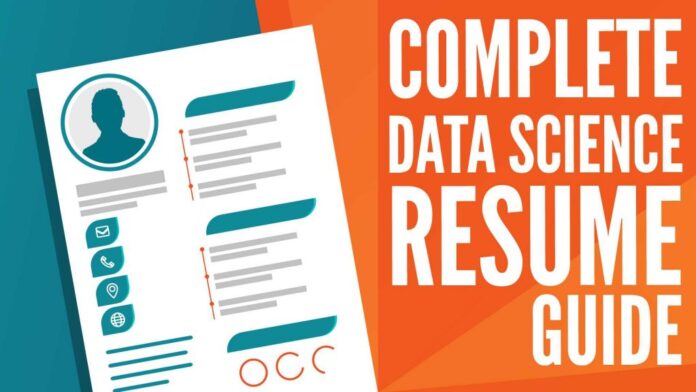According to statistics from a LinkedIn study, data scientist jobs are growing at a steady pace, and is one of the 20 Fastest-Growing Jobs in the United States. in the coming years. While it may seem like a small number, it is faster than most other job roles and just shows the surge for data scientists in the current job market.
It may be difficult to stay still on the rocky boat that is the ever-evolving work culture, but one thing that has remained constant is data and loads of it for every company. With the jump to the technology bandwagon, most companies have recognized the need for this esteemed role.
Such a job position certainly entails the need to be qualified and perfect, which can be overwhelming. However, it is completely achievable with the right guidance. Here are a few tips to ace your data science resume that will help you stay on par with industry standards and help you bag that job!
Ensure that Your Resume is ATS-Compliant
For a saturated job position like data science, the number of applicants that come into every job role is more than what can be handled by two or three recruiters. To make this process a ton easier, companies use the Applicant Tracking System to screen through resumes and do the first round of selection.
The ATS weeds out unqualified or spammy resumes, which can be due to the little details in how you frame your resume than your qualifications.
To pass this test, you need to make sure that your resume is organized into neat sections and follow the reverse chronological resume format. Along with that, weave important keywords from the companies’ job descriptions into your data science resume.
Arrange Your Work Experience
No matter how little or more, there is a preferred way of drafting your work experience section. Instead of writing paragraphs upon paragraphs and writing a wall of text that your recruiter will not be able to read in the mere 7.4 seconds they have, consider switching things up a little.
Instead of walking your recruiter through your work experience like a story, you could keep it concise by listing your experiences in one-liners as bulletins. Additionally, group similar bulletins and you could give appropriate subheadings to those clusters.
You could take it a step further by maintaining a cause-effect relationship in your work experience. Truth is, you can make empty claims all you want but to impress a recruiter, you could provide numbers or any kinds of achievements to give them a solid basis to assess your expertise.
Add Additional Sections
Aside from the usual resume sections, you could add multiple sections based on your requirements. As a data scientist job, you could make a separate section for certifications or training.
You could also dedicate a whole section to projects or research work, or the reliable volunteer experience section. The key to do this properly is by deeply evaluating your experiences and choosing what would be relevant to your desired job position.
Data Science Skills
Your whole job as a data scientist would entail a whole list of skills that you cannot possibly contain in one page. Coincidentally, this is why you need a skills section.
You can make two separate sections for skills, one being key skills and the other being technical skills. While in key skills you write hard and soft skills that are needed for the role, for technical skills you can list down all the tools and software you are familiar with.
To do this, you can screen the job descriptions enlisted by companies for skills and add them to your resume. Ideally, you must rely on your work experience and career trajectory to identify skills that you think will be important for the role.
Customize Your Resume
Creating just one resume for every data scientist job that you apply to is negligence on your behalf. To begin with, you can create a master resume of all your work experience, skills, and entire career trajectory.
Every time you want to apply, you can pick information from this master resume that you think is relevant to the job that you are applying for.
The most efficient way to do this is by assessing their job description and screening through their requirements and roles and responsibilities for any keywords or recurring ideas. All recruiters need is one page of valuable information, so you do not have to stretch it far by adding irrelevant information.
For example, your master resume may have your high school grades and course modules from your bachelor’s degree. However, this does not mean that you absolutely cannot have this information in your resume, but that you need not stick to the adding every bit of your trajectory.
If you have years of experience, you do not need to add your high school degree, or your course modules from your Bachelor’s degree.
Key Takeaways
The pressure of creating the perfect data science resume can be overwhelming if you don’t have the tips to do it right. We are not talking about any drastic changes that you need to make in your resume, but basic tweaks that can improve the quality of your resume by a ton!
You can achieve that by following these tips:
- Make sure that your resume is ATS-compliant by extracting the keywords from the company’s job description
- Organize your work experience by categorizing them into relevant groups and writing them in one-liners instead of lengthy paragraphs
- Assess your career trajectory and customize your resume to fit your qualifications by adding extra sections for training, certifications, or the like if deemed necessary
- Divide your hard skills and technical skills into two sections to delve deeper into both areas
- Do not send a generic resume to every job and customize it to your fullest capability by scanning job descriptions for their requirements
Happy job hunting!











![Extratorrents Is Down : Here Are The Best Alternatives To Extratorrent Top 14 ExtraTorrent Alternatives + 12 Mirror Sites [Updated 2020]](https://www.todaytechmedia.com/wp-content/uploads/2020/02/featured-100x70.jpg)